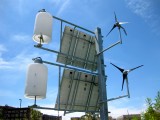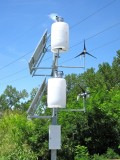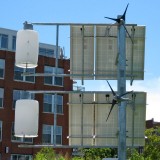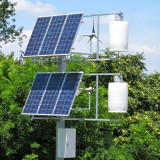If I said that computers got slower with age, you’d look at me as if I were deranged. But REF say effectively that about wind turbines.
My former (nutso) argument goes like this: your 30 year old Commodore 64 is so much slower than the multi-core beastie you’re reading this post on, so computers get slower as they age, amirite …? I can’t actually keep this nonsense up much longer (computers have always been as fast as the market and technology could support), but the Renewable Energy Foundation manage for about 50 pages of statistical gorp in their paper, “Analysis of Wind Farm Performance in UK and Denmark“. And oh boy does the dittosphere like to report on it, like here, here, here, here, and here.
In short, the key graph in the report is this:
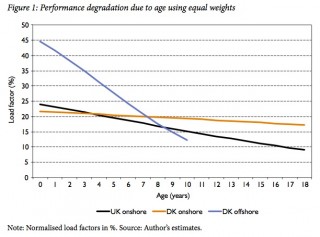 If you believe it, it shows a steady decline in wind farm output with age. But thankfully, the good chaps at REF supply all of their data (and also have a bunch of other wind farm stats lying around in easily scrapeable formats; cheers, m’dears!), so I could take a look at their claims. So I made a subset: uk_annual_ncf [ODF], which has:
If you believe it, it shows a steady decline in wind farm output with age. But thankfully, the good chaps at REF supply all of their data (and also have a bunch of other wind farm stats lying around in easily scrapeable formats; cheers, m’dears!), so I could take a look at their claims. So I made a subset: uk_annual_ncf [ODF], which has:
- all the monthly stats collapsed into annual Net Capacity Factors (NCF) for 2003–2011
- only the sites that have full details of wind turbine model, rating, installation date, height and diameter
- none of the sites that have been obviously repowered, with giant NCF jumps being a giveaway
- minor edits to turbines specs on sites I know and likely worked on at some point.
First off, and most blatantly, there’s no correction for annual wind patterns in the REF report. Blustery Januaries are merrily correlated against balmy Augusts, so there’s a lot of noise in the data. Using only annual data for those sites with 9 full years of data aligned everything quite nicely:
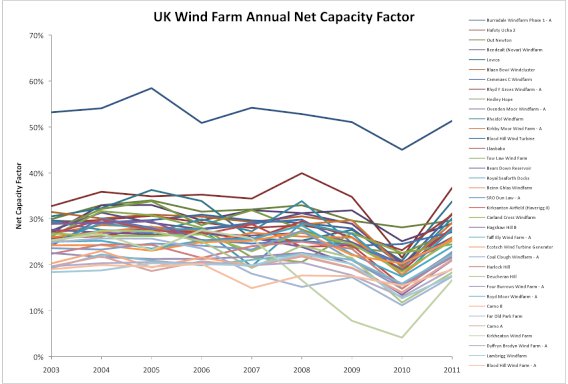 No real trends evident there, except that the wind appeared to have sucked mightily in 2010. So how about if I graph the same data, but plot it by project age at mid-year:
No real trends evident there, except that the wind appeared to have sucked mightily in 2010. So how about if I graph the same data, but plot it by project age at mid-year:
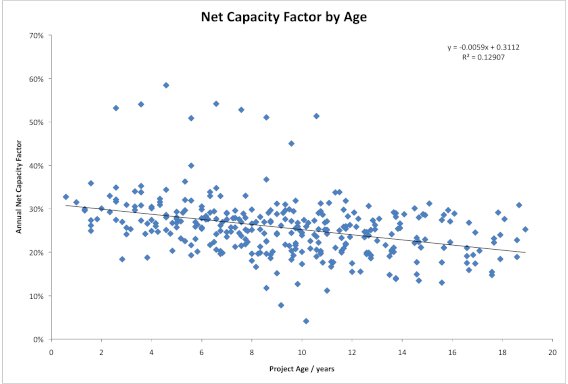 And there it is: a trend pulled from where there was none. It’s not very well correlated, but you could say that it shows a decline in NCF of about 0.6% per year. I wonder where it came from?
And there it is: a trend pulled from where there was none. It’s not very well correlated, but you could say that it shows a decline in NCF of about 0.6% per year. I wonder where it came from?
There’s one site that gives REF’s game away: Blood Hill, in Norfolk. It’s had 10× 225 kW Vestas V27s on 30m towers running since 1992, but it’s also got a single megawatt-class Enercon turbine on a 65 m tower which was installed in 2000. Here’s how the annual capacity factor looks for both sites:
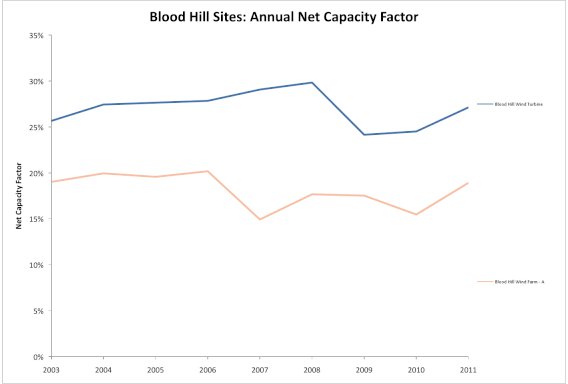 Apart from a slight maintenance wibble in 2007-2008 on the older turbines, the capacity factors track each other quite well. Remember, these turbines are nearly 20 years old at the end of the graph; according to REF, they’d be bumping along at about a third of their original capacity. So let’s graph them by age:
Apart from a slight maintenance wibble in 2007-2008 on the older turbines, the capacity factors track each other quite well. Remember, these turbines are nearly 20 years old at the end of the graph; according to REF, they’d be bumping along at about a third of their original capacity. So let’s graph them by age:
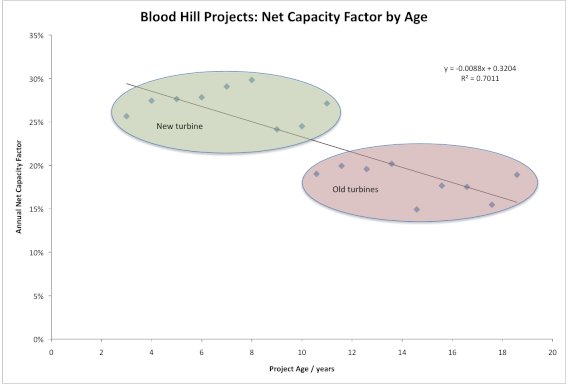 Aha! Here is the secret key (as a certain spider might say). If you compare new, tall turbines against old, small ones you get this false correlation. To show you how much wind turbines have grown, here are the average sizes for each installation year in the data set:
Aha! Here is the secret key (as a certain spider might say). If you compare new, tall turbines against old, small ones you get this false correlation. To show you how much wind turbines have grown, here are the average sizes for each installation year in the data set:
| Year |
Avg Height
/ m |
Avg Diameter
/ m |
Avg Power
/ kW |
Installed Capacity in year
/ MW |
| 1991 |
32.0 |
34.0 |
400.0 |
4.0 |
| 1992 |
30.3 |
31.7 |
343.2 |
25.1 |
| 1993 |
31.8 |
35.2 |
428.0 |
35.1 |
| 1994 |
31.7 |
37.0 |
466.7 |
15.4 |
| 1995 |
35.0 |
44.0 |
600.0 |
15.6 |
| 1996 |
31.8 |
40.7 |
573.6 |
60.8 |
| 1997 |
32.3 |
41.3 |
527.7 |
34.3 |
| 1998 |
33.2 |
33.3 |
363.2 |
6.9 |
| 1999 |
40.6 |
45.5 |
647.1 |
18.1 |
| 2000 |
39.7 |
45.5 |
672.4 |
49.8 |
| 2001 |
40.9 |
51.6 |
963.9 |
31.8 |
| 2002 |
43.4 |
55.6 |
1023.1 |
26.6 |
| 2003 |
58.3 |
58.0 |
1166.7 |
3.5 |
| 2004 |
51.4 |
64.9 |
1593.5 |
146.6 |
| 2005 |
54.4 |
64.9 |
1525.7 |
346.3 |
| 2006 |
60.9 |
74.2 |
1919.5 |
418.5 |
| 2007 |
63.5 |
68.8 |
1753.4 |
206.9 |
| 2008 |
66.7 |
78.0 |
2104.4 |
662.9 |
| 2009 |
60.6 |
71.0 |
1804.4 |
268.9 |
| 2010 |
69.6 |
79.4 |
1987.8 |
163.0 |
It’s clear from the table that the height, diameter, and rated power of the turbines installed in the UK have all gone up. Turbines really have got bigger over the years; just look at this old promo slide from Vestas:
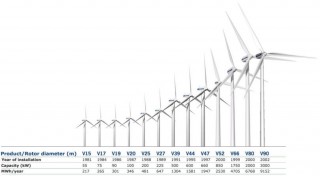 Wind turbines grew immensely; maybe not quite by Moore’s Law, but exceedingly fast for mechanical machinery. So to even compare old turbines to new is exactly like comparing your old Commodore 64 to a current computer: that’s to say, not even wrong.
Wind turbines grew immensely; maybe not quite by Moore’s Law, but exceedingly fast for mechanical machinery. So to even compare old turbines to new is exactly like comparing your old Commodore 64 to a current computer: that’s to say, not even wrong.
This is how wind turbine hub height grows by installation year for the sites it can be reliably extracted from the REF data:
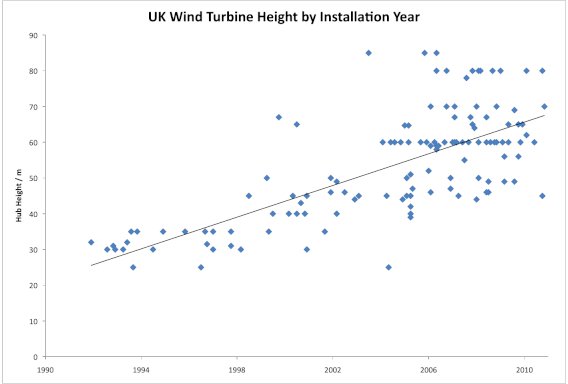 or if you want to look at it the way REF does, by age:
or if you want to look at it the way REF does, by age:
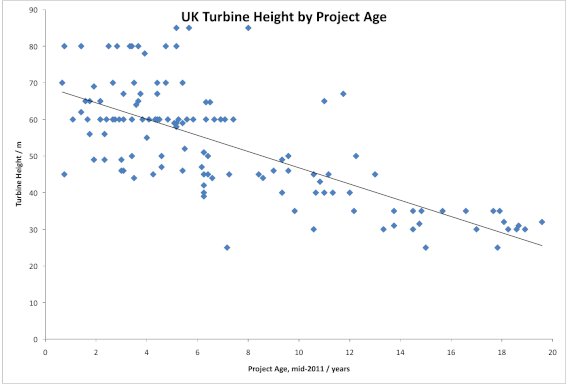 (I fully expect someone to come out with a report that says “Wind Turbines Get Smaller As They Get Older” … oh wait, REF already did.)
(I fully expect someone to come out with a report that says “Wind Turbines Get Smaller As They Get Older” … oh wait, REF already did.)
To compound this effect, wind speeds increase with height from the ground. So taller, newer turbines are able to harvest much more energy than shorter, older ones. What’s more, the larger a wind turbine’s rotor, the more swept area it has, so it will have even more energy available to supply to the grid. In a later post, I’ll run a simulation where, with no degradation from a wind turbine’s output, you can fake a decline just by building taller turbines every year.
In short, we can take two things from the anti-wind REF’s report:
- There is no gross decline in a wind project’s output with age.
- New, tall turbines are super-awesome compared to older, shorter ones.
The sad thing is that REF peddle this deliberately misleading crap, and some of the public believes them. The spectacularly sad thing is that I had to waste my time sleuthing my way through it all.
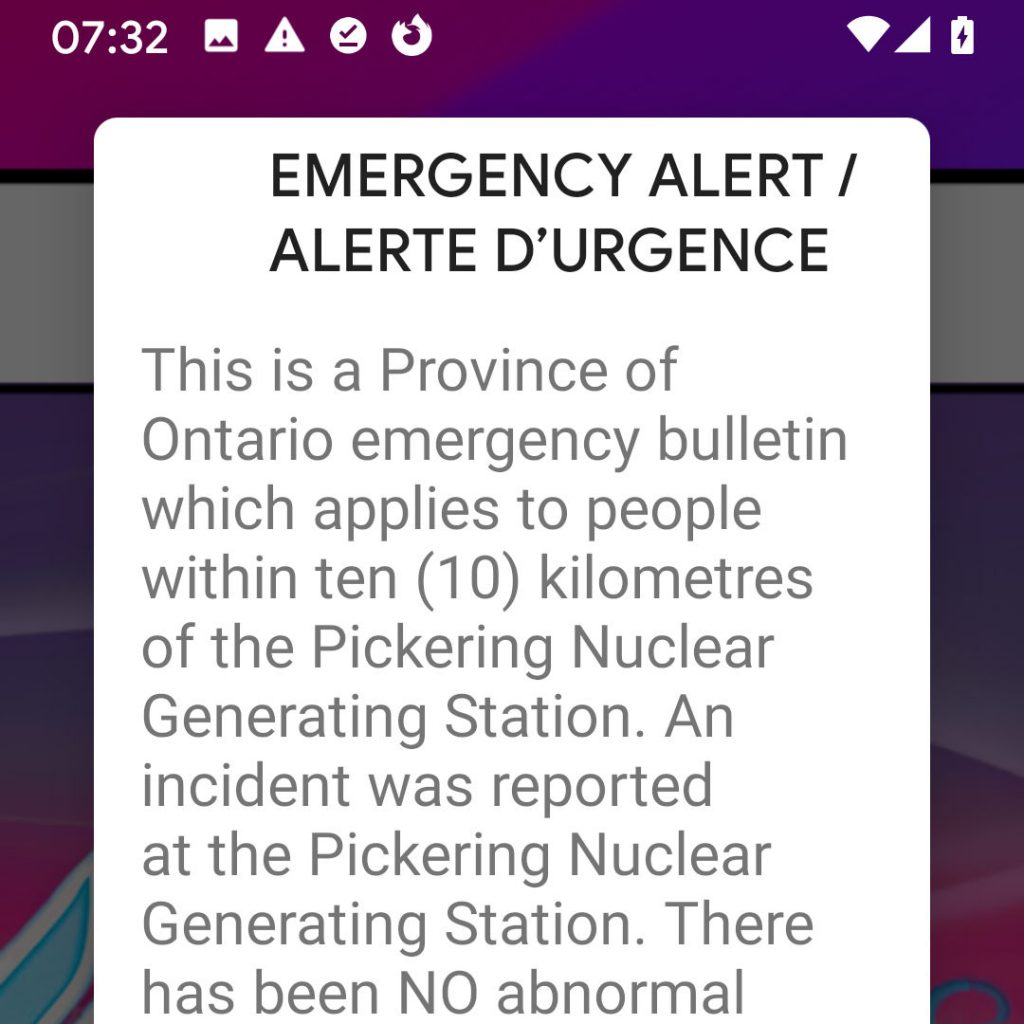
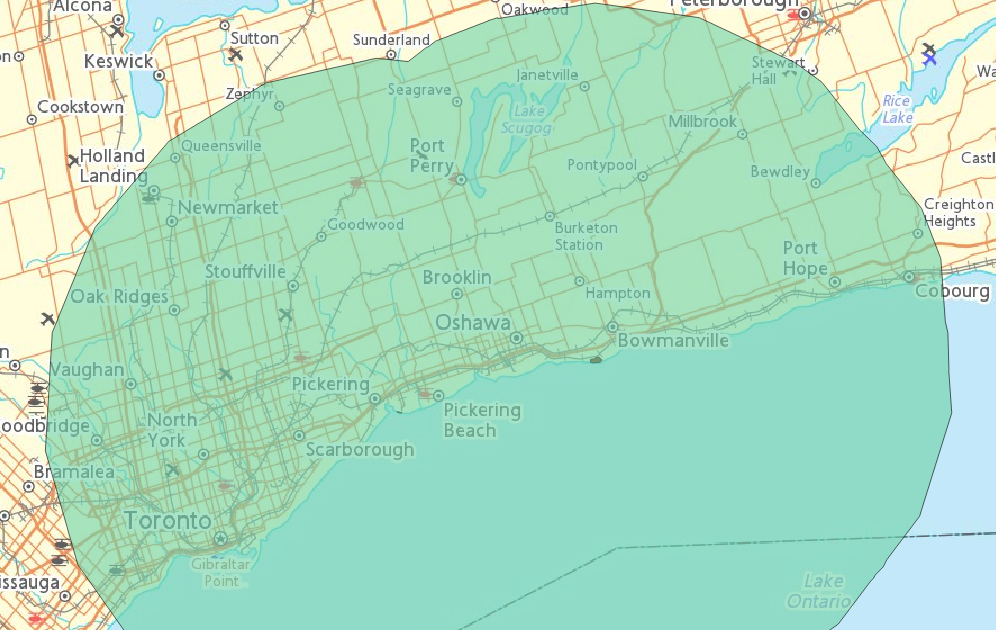
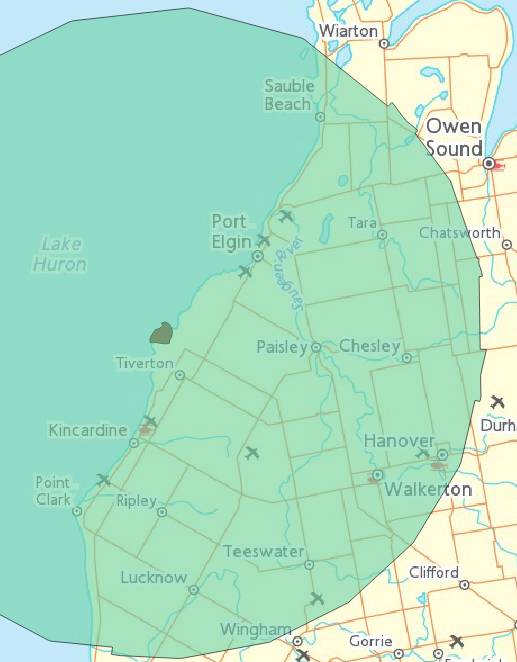
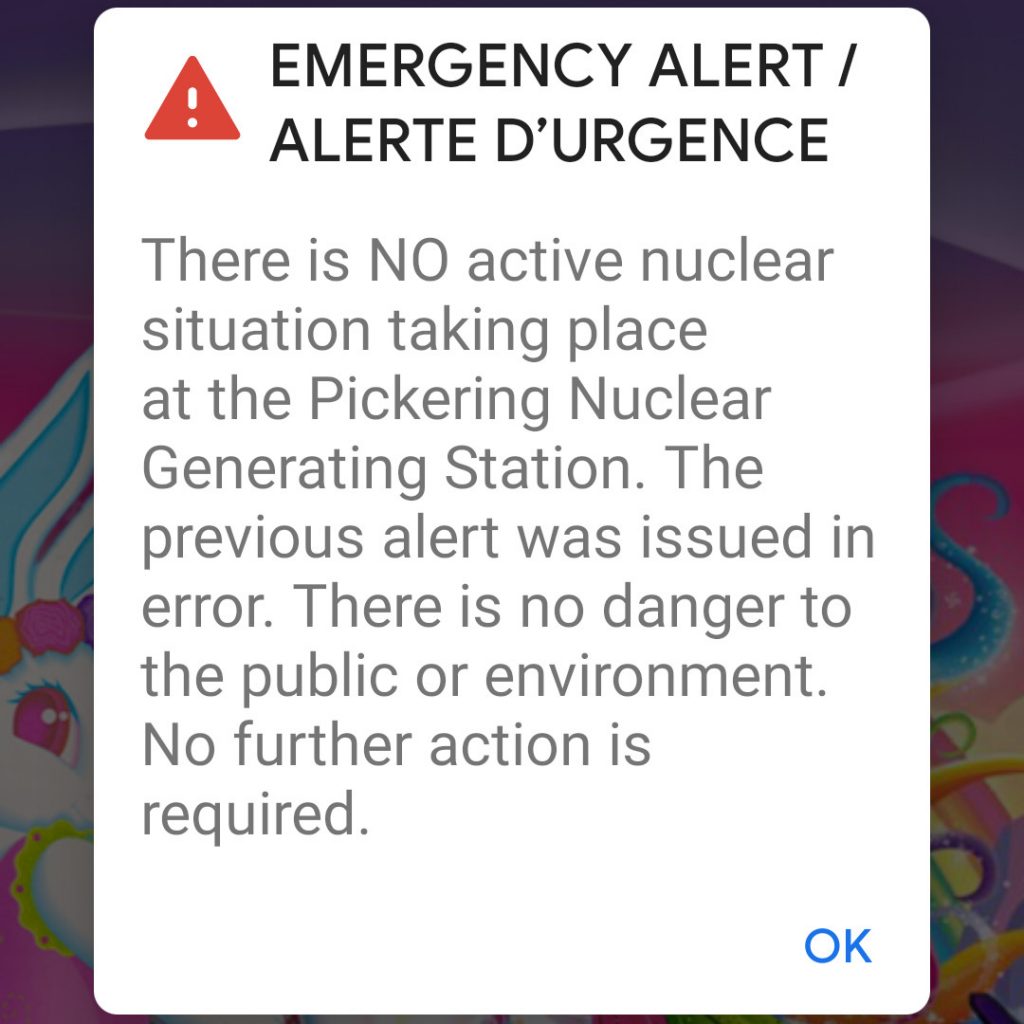
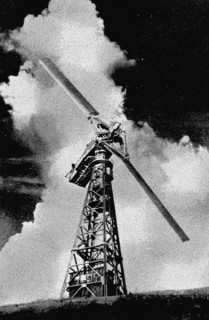








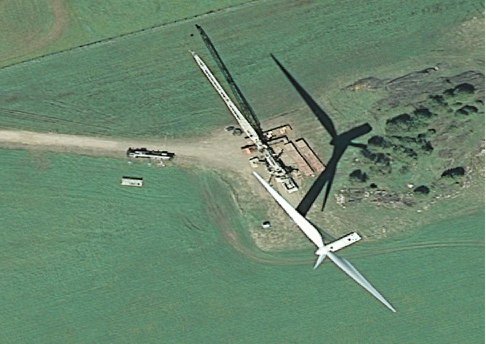
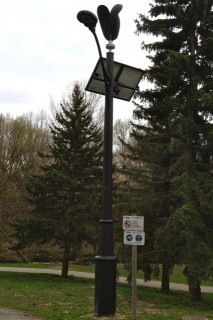
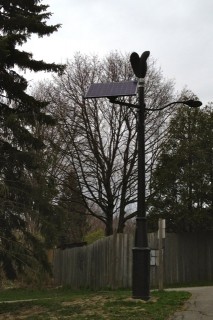
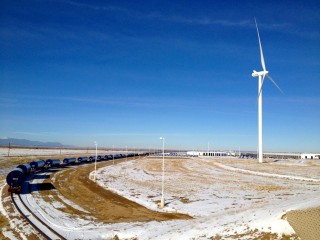
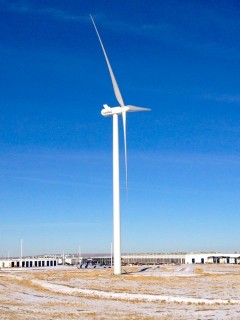
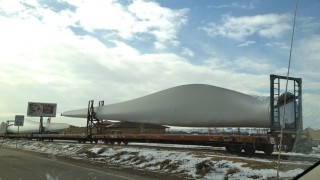
![vawts up with durham college? [ho ho ho]](http://scruss.com/wordpress/wp-content/uploads/2011/04/xIMG00071-20110402-1443.jpg)


